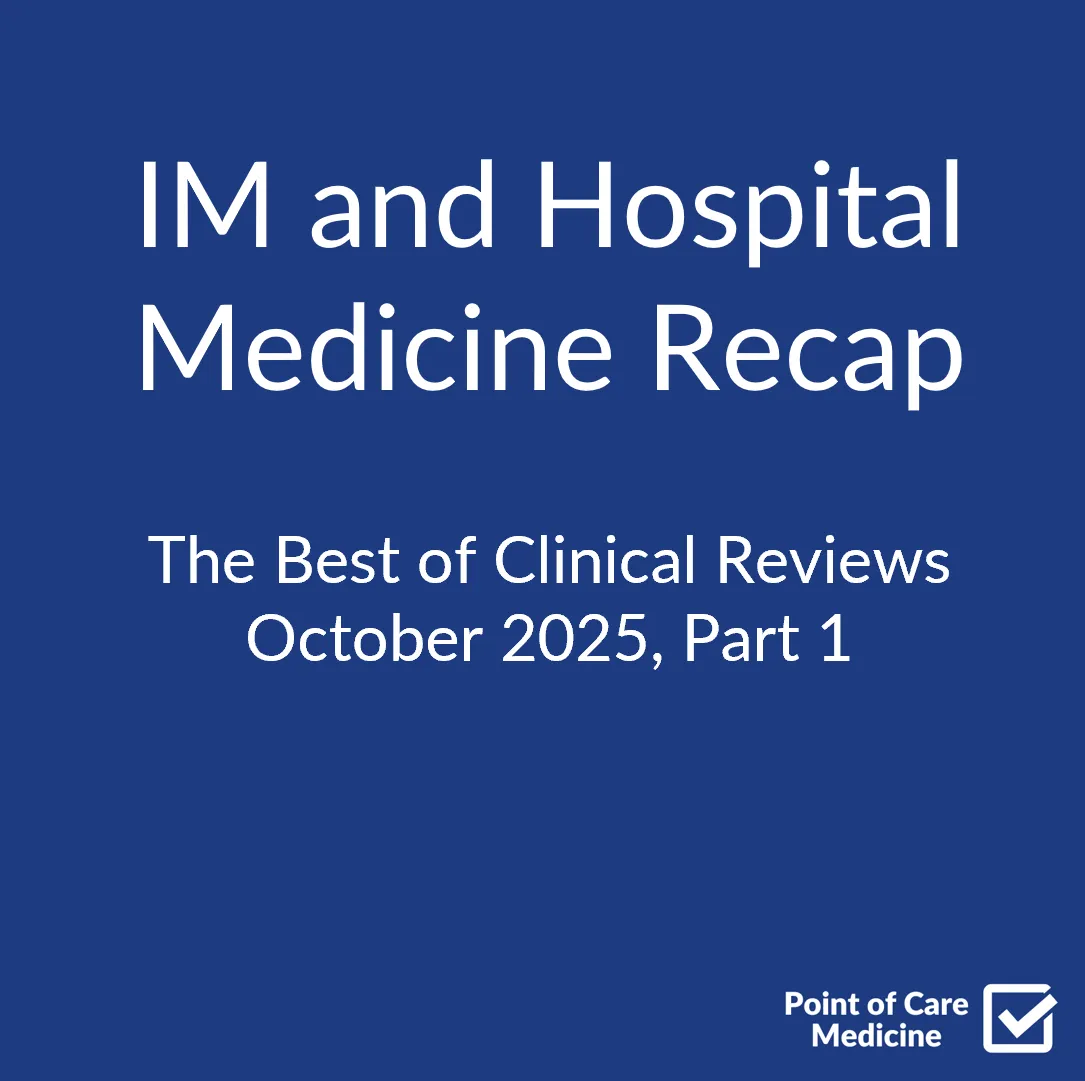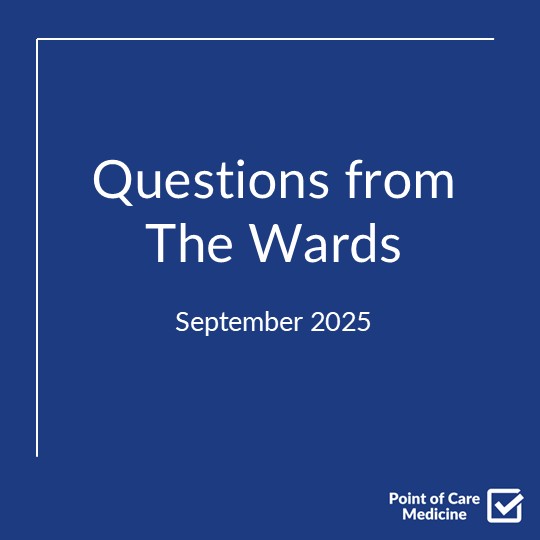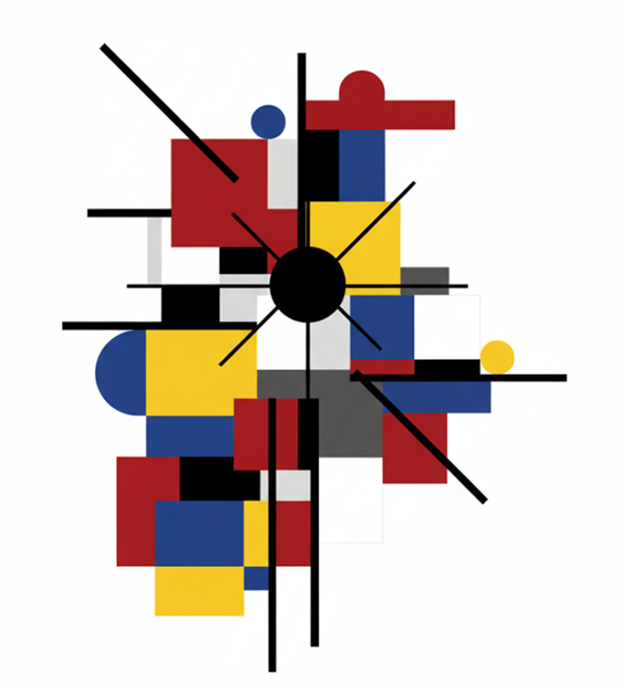Summary
- The diagnostic approach to dizziness should prioritize understanding the timing and triggers of symptoms (e.g., episodic vs. continuous, spontaneous vs. triggered) over relying solely on the patient's qualitative description of their "dizziness," as the latter is often imprecise and unreliable for differentiating etiologies.
- The HINTS (Head Impulse, Nystagmus, Test of Skew) examination is a critical bedside tool for differentiating acute vestibular syndrome (AVS) due to a peripheral cause (like vestibular neuritis) from a central cause (like a posterior circulation stroke), and should only be performed on patients with ongoing, continuous vertigo and nystagmus.
- Posterior circulation stroke (e.g., cerebellar or brainstem infarction) can manifest as an acute vestibular syndrome and must be diligently differentiated from more benign peripheral causes; key indicators for a central cause include a "dangerous" HINTS exam, associated focal neurological deficits (e.g., dysarthria, dysphagia, diplopia, dysmetria - the "Dangerous D's"), severe gait ataxia (especially inability to walk unassisted), or a new, severe headache.
- Central nystagmus patterns, which are indicative of brainstem or cerebellar dysfunction, often include purely vertical (upbeating or downbeating) nystagmus, purely torsional nystagmus, direction-changing gaze-evoked nystagmus (nystagmus that changes its fast-phase direction with the direction of gaze), and nystagmus that does not suppress or may even worsen with visual fixation.
- Vestibular neuritis presents as an acute vestibular syndrome with the sudden onset of severe, continuous vertigo, nausea, vomiting, and gait instability, typically lasting for several days to weeks, often following a viral prodrome, and is distinguished from stroke by a "reassuring" HINTS exam.
- Benign Paroxysmal Positional Vertigo (BPPV) is characterized by brief (typically <60 seconds, often 10-30 seconds) episodes of vertigo triggered by specific changes in head position relative to gravity, diagnosed by the Dix-Hallpike maneuver (for posterior canal BPPV), and treated effectively with canalith repositioning maneuvers like the Epley maneuver.
- Meniere's disease is characterized by spontaneous, recurrent episodes of vertigo lasting from 20 minutes to 12 hours, accompanied by fluctuating unilateral sensorineural hearing loss (initially often low-frequency), tinnitus, and a sensation of aural fullness or pressure in the affected ear.
- Vestibular migraine is a common cause of recurrent, spontaneous episodic vertigo, diagnosed based on a history of migraine headaches (meeting International Classification of Headache Disorders criteria, with or without aura) and episodes of vestibular symptoms (vertigo, dizziness, or unsteadiness) lasting from 5 minutes to 72 hours, with at least 50% of these episodes being associated with one or more migrainous features.
- Orthostatic hypotension, a frequent cause of presyncopal dizziness (lightheadedness, feeling of impending faint), is defined as a sustained drop in systolic blood pressure of ≥20 mmHg or a drop in diastolic blood pressure of ≥10 mmHg occurring within 3 minutes of changing from a supine or sitting position to a standing position.
- Medication-induced dizziness is a frequent and often reversible cause of dizziness, encompassing various mechanisms including ototoxicity leading to vestibulopathy, cerebellar toxicity causing ataxia, induction of orthostatic hypotension, sedation impairing balance, or direct vestibular suppression.
- Persistent Postural-Perceptual Dizziness (PPPD) is a chronic functional vestibular disorder characterized by persistent non-vertiginous dizziness, unsteadiness, or non-spinning vertigo that is present on most days for three months or more, and is typically exacerbated by upright posture, active or passive self-motion, or exposure to complex or moving visual stimuli (e.g., crowds, busy patterns).
- In older adults, dizziness is frequently multifactorial, and there is an increased likelihood of serious underlying causes such as stroke or significant cardiovascular disease; therefore, a comprehensive assessment including a detailed medication review, evaluation for sensory deficits (vision, hearing, proprioception), and a careful neurologic and cardiac examination is crucial.
Audio
Video
Introduction
Dizziness is one of the most common and diagnostically challenging complaints encountered in clinical practice. The imprecise nature of patient descriptions often complicates the differentiation between benign peripheral conditions and life-threatening central etiologies like stroke. Effective management requires a systematic approach that prioritizes symptom timing and triggers over subjective quality. This guide provides physicians with 12 essential principles for a structured, evidence-based evaluation of the dizzy patient, ensuring accurate diagnosis and appropriate care.
1) The diagnostic approach to dizziness should prioritize understanding the timing and triggers of symptoms (e.g., episodic vs. continuous, spontaneous vs. triggered) over relying solely on the patient's qualitative description of their "dizziness," as the latter is often imprecise and unreliable for differentiating etiologies.
Frameworks like TiTrATE (Timing, Triggers, And Targeted Examination) provide a systematic method that is more reliable than asking patients to describe the sensation. The initial step is to classify the timing into distinct syndromes. Acute Vestibular Syndrome (AVS) is defined by the acute onset of continuous vertigo, nausea, gait instability, and nystagmus lasting days to weeks. This must be distinguished from Episodic Vestibular Syndromes, which involve transient, recurrent episodes.
Episodic syndromes are further divided by their triggers. Triggered episodes, such as those caused by head position changes in BPPV or by standing in orthostatic hypotension, have a clear precipitant. In contrast, spontaneous episodes occur without a clear trigger, as seen in Meniere's disease, vestibular migraine, or TIA. Finally, Chronic Vestibular Syndrome involves continuous symptoms for weeks to years, potentially following an unresolved AVS or indicating a primary neurologic disorder like Persistent Postural-Perceptual Dizziness (PPPD). A critical distinction is whether head movements trigger vertigo (suggesting an episodic syndrome like BPPV) versus exacerbating ongoing vertigo (characteristic of AVS).
2) The HINTS (Head Impulse, Nystagmus, Test of Skew) examination is a critical bedside tool for differentiating acute vestibular syndrome (AVS) due to a peripheral cause (like vestibular neuritis) from a central cause (like a posterior circulation stroke), and should only be performed on patients with ongoing, continuous vertigo and nystagmus.
The utility of the HINTS exam is strictly limited to patients with active AVS; performing it on those with triggered or resolved vertigo can be misleading. A "reassuring" HINTS exam, suggesting a peripheral cause, consists of an abnormal (positive) head impulse test (with a corrective saccade), unidirectional horizontal nystagmus that suppresses with fixation, and no skew deviation.
Conversely, a "dangerous" HINTS exam (suggesting a central cause, often remembered by the mnemonic INFARCT: Impulse Normal, Fast-phase Alternating, Refixation on Cover Test) includes any one of the following: a normal (negative) head impulse test, direction-changing nystagmus, or the presence of skew deviation. Research has shown that a properly performed HINTS exam has higher sensitivity for stroke in AVS patients than early MRI (within the first 24-48 hours). The "HINTS Plus" modification adds an assessment for new-onset unilateral hearing loss, which, if present, should raise suspicion for an anterior inferior cerebellar artery (AICA) territory stroke.
3) Posterior circulation stroke (e.g., cerebellar or brainstem infarction) can manifest as an acute vestibular syndrome and must be diligently differentiated from more benign peripheral causes; key indicators for a central cause include a "dangerous" HINTS exam, associated focal neurological deficits (e.g., dysarthria, dysphagia, diplopia, dysmetria - the "Dangerous D's"), severe gait ataxia (especially inability to walk unassisted), or a new, severe headache.
While many strokes present with overt neurological signs, approximately 10% can present with isolated vertigo, particularly in the early stages. A normal head impulse test in a patient with AVS is a powerful predictor of stroke. Other highly concerning signs for a central lesion include purely vertical nystagmus or skew deviation. Clinicians should also assess for marked truncal or gait ataxia that seems disproportionate to the patient's subjective vertigo, as this strongly suggests a cerebellar lesion.
MRI with diffusion-weighted imaging (DWI) is the preferred imaging modality, but it can be falsely negative in 15-20% of posterior circulation strokes within the first 24-48 hours. A non-contrast head CT is largely insensitive for acute ischemic stroke in this region but can rule out hemorrhage. While traditional risk factors increase suspicion, posterior circulation strokes can occur in younger patients without these risk factors, often due to vertebral artery dissection.
4) Central nystagmus patterns, which are indicative of brainstem or cerebellar dysfunction, often include purely vertical (upbeating or downbeating) nystagmus, purely torsional nystagmus, direction-changing gaze-evoked nystagmus (nystagmus that changes its fast-phase direction with the direction of gaze), and nystagmus that does not suppress or may even worsen with visual fixation.
These patterns contrast sharply with peripheral nystagmus, which is typically unidirectional, predominantly horizontal-torsional, and suppressed by visual fixation. The inability to suppress nystagmus with visual fixation is a hallmark of a central origin. Clinicians may need to use Frenzel goggles or a penlight cover test to observe peripheral nystagmus clearly.
Specific central patterns can point to the location of the lesion. Persistent downbeating nystagmus is often associated with lesions at the craniocervical junction (e.g., Chiari malformation), while persistent upbeating nystagmus can be caused by lesions in the medulla, pons, or cerebellum. Direction-changing gaze-evoked nystagmus (e.g., right-beating on right gaze, left-beating on left gaze) is a strong indicator of central pathology, often cerebellar, and is a key "dangerous" finding in the HINTS exam.
5) Vestibular neuritis presents as an acute vestibular syndrome with the sudden onset of severe, continuous vertigo, nausea, vomiting, and gait instability, typically lasting for several days to weeks, often following a viral prodrome, and is distinguished from stroke by a "reassuring" HINTS exam.
The underlying cause is inflammation of the vestibular portion of the eighth cranial nerve, leading to acute unilateral vestibular hypofunction. When associated with unilateral sensorineural hearing loss or tinnitus, the condition is termed labyrinthitis. The characteristic physical finding is spontaneous, unidirectional nystagmus that beats away from the affected side and increases in intensity when looking toward the fast phase (Alexander's Law). Critically, the head impulse test will be abnormal (positive) when the head is thrust toward the affected side.
Treatment is primarily supportive. A short course (≤3 days) of vestibular suppressants and antiemetics can manage acute symptoms, but prolonged use of suppressants should be avoided as it impedes central compensation. Corticosteroids may be considered if initiated within 72 hours, though evidence for long-term benefit is mixed. Vestibular rehabilitation exercises are crucial for promoting central compensation and accelerating recovery.
6) Benign Paroxysmal Positional Vertigo (BPPV) is characterized by brief (typically <60 seconds, often 10-30 seconds) episodes of vertigo triggered by specific changes in head position relative to gravity, diagnosed by the Dix-Hallpike maneuver (for posterior canal BPPV), and treated effectively with canalith repositioning maneuvers like the Epley maneuver.
The condition is caused by displaced otoconia (calcium carbonate crystals) that have migrated into a semicircular canal, most commonly the posterior canal (80-90% of cases). The Dix-Hallpike maneuver is diagnostic for posterior canal BPPV, eliciting transient vertigo and a characteristic upbeating and torsional nystagmus after a brief latency. The first-line treatment is the Epley maneuver, a highly effective procedure to guide the otoconia back into the utricle.
Horizontal canal BPPV (5-15% of cases) is diagnosed with the supine roll test and treated with maneuvers like the Lempert (barbecue) roll. Importantly, vestibular suppressant medications (e.g., meclizine) are generally not recommended for routine BPPV management. They do not address the underlying mechanical issue and can delay recovery and increase fall risk, especially in older adults.
7) Meniere's disease is characterized by spontaneous, recurrent episodes of vertigo lasting from 20 minutes to 12 hours, accompanied by fluctuating unilateral sensorineural hearing loss (initially often low-frequency), tinnitus, and a sensation of aural fullness or pressure in the affected ear.
The pathophysiology is believed to involve endolymphatic hydrops, an abnormal accumulation of endolymph in the inner ear. Formal diagnostic criteria (e.g., from the Bárány Society) require at least two spontaneous vertigo episodes (20 minutes to 12 hours), audiometrically documented low- to mid-frequency sensorineural hearing loss, and fluctuating aural symptoms in the affected ear. Over time, the hearing loss can become permanent and progressive.
Management of acute attacks involves symptomatic relief with vestibular suppressants and antiemetics. Long-term strategies aim to reduce attack frequency and severity through lifestyle modifications (e.g., low-salt diet <2 g/day , reduced caffeine/alcohol) and medical therapy such as diuretics or betahistine. For refractory cases, intratympanic steroid injections, ablative gentamicin therapy, or surgery may be considered.
8) Vestibular migraine is a common cause of recurrent, spontaneous episodic vertigo, diagnosed based on a history of migraine headaches (meeting International Classification of Headache Disorders criteria, with or without aura) and episodes of vestibular symptoms (vertigo, dizziness, or unsteadiness) lasting from 5 minutes to 72 hours, with at least 50% of these episodes being associated with one or more migrainous features.
The vestibular symptoms can occur before, during, after, or entirely independent of the headache. Accompanying migrainous features include a migraine-type headache, photophobia, phonophobia, or visual aura. The diagnosis is clinical, often made after excluding other causes. Unlike Meniere's disease, persistent hearing loss or constant tinnitus is typically absent.
Management strategies mirror those for other forms of migraine. This includes lifestyle modifications to avoid triggers, acute therapies like triptans and NSAIDs, and prophylactic medications for frequent episodes, such as beta-blockers (propranolol), antidepressants (amitriptyline), anticonvulsants (topiramate), or CGRP inhibitors. The neurological exam is usually normal between attacks.
9) Orthostatic hypotension, a frequent cause of presyncopal dizziness (lightheadedness, feeling of impending faint), is defined as a sustained drop in systolic blood pressure of ≥20 mmHg or a drop in diastolic blood pressure of ≥10 mmHg occurring within 3 minutes of changing from a supine or sitting position to a standing position.
Symptoms typically include lightheadedness, blurred vision, weakness, or feeling faint, provoked by standing and relieved by lying down. Etiologies can be neurogenic (e.g., Parkinson's disease, autonomic neuropathy) or non-neurogenic, most commonly due to volume depletion or medication effects (e.g., antihypertensives, alpha-blockers, diuretics).
Evaluation requires a careful medication review and meticulous measurement of orthostatic vital signs. Management focuses on treating the underlying cause. Non-pharmacologic measures are first-line, including increasing fluid and salt intake, using compression stockings, and performing counter-pressure maneuvers. For refractory neurogenic orthostatic hypotension, pharmacologic therapy with agents like midodrine, fludrocortisone, or droxidopa may be necessary.
10) Medication-induced dizziness is a frequent and often reversible cause of dizziness, encompassing various mechanisms including ototoxicity leading to vestibulopathy, cerebellar toxicity causing ataxia, induction of orthostatic hypotension, sedation impairing balance, or direct vestibular suppression.
A meticulous review of all medications, including over-the-counter and herbal products, is essential in any patient with new or worsening dizziness. Aminoglycoside antibiotics (e.g., gentamicin) can cause irreversible bilateral vestibulotoxicity, leading to oscillopsia and severe imbalance. Other common culprits include antihypertensives (causing orthostatic hypotension), anticonvulsants like phenytoin (causing cerebellar ataxia), and sedatives like benzodiazepines (impairing balance).
Alcohol is another common neurotoxin that can cause both acute vertigo and chronic cerebellar degeneration. In many cases, symptoms can be resolved or significantly improved by discontinuing or reducing the dose of the offending medication, highlighting the importance of identifying iatrogenic causes.
11) Persistent Postural-Perceptual Dizziness (PPPD) is a chronic functional vestibular disorder characterized by persistent non-vertiginous dizziness, unsteadiness, or non-spinning vertigo that is present on most days for three months or more, and is typically exacerbated by upright posture, active or passive self-motion, or exposure to complex or moving visual stimuli (e.g., crowds, busy patterns).
This condition often develops after an acute event that caused dizziness, such as BPPV or vestibular neuritis, but the symptoms persist long after the initial trigger has resolved. The pathophysiology is thought to involve maladaptive changes in postural control, an over-reliance on visual cues, and altered central processing of spatial information, often linked to heightened anxiety.
Diagnosis is clinical, based on established criteria from the Bárány Society, after excluding other active conditions. Treatment is multimodal and highly effective, combining vestibular rehabilitation therapy (VRT) to recalibrate balance, cognitive-behavioral therapy (CBT) to address maladaptive behaviors, and medications such as SSRIs or SNRIs to modulate central sensory processing.
12) In older adults, dizziness is frequently multifactorial, and there is an increased likelihood of serious underlying causes such as stroke or significant cardiovascular disease; therefore, a comprehensive assessment including a detailed medication review, evaluation for sensory deficits (vision, hearing, proprioception), and a careful neurologic and cardiac examination is crucial.
Dizziness in this population is rarely due to a single cause. Age-related degeneration of the vestibular, visual, and proprioceptive systems, combined with musculoskeletal decline, creates a high baseline risk. Polypharmacy is a major contributor, increasing the risk of medication side effects and orthostatic hypotension.
The incidence of central causes like stroke is significantly higher, and presentations may be atypical, warranting a lower threshold for neuroimaging. While BPPV is also more common with age, it is critical not to default to this diagnosis without a thorough evaluation. The primary management goal in this population is fall prevention, as falls can lead to devastating consequences. A comprehensive geriatric assessment and targeted interventions like balance training are essential.
Conclusion
A structured, systematic evaluation is paramount for navigating the complexities of dizziness. By focusing on symptom timing and triggers, proficiently applying bedside examinations like the HINTS test, and maintaining a high index of suspicion for central causes, clinicians can significantly improve diagnostic accuracy. Understanding the distinct profiles of common peripheral, central, and systemic etiologies allows for targeted management that enhances patient safety and improves long-term outcomes.








.png)
